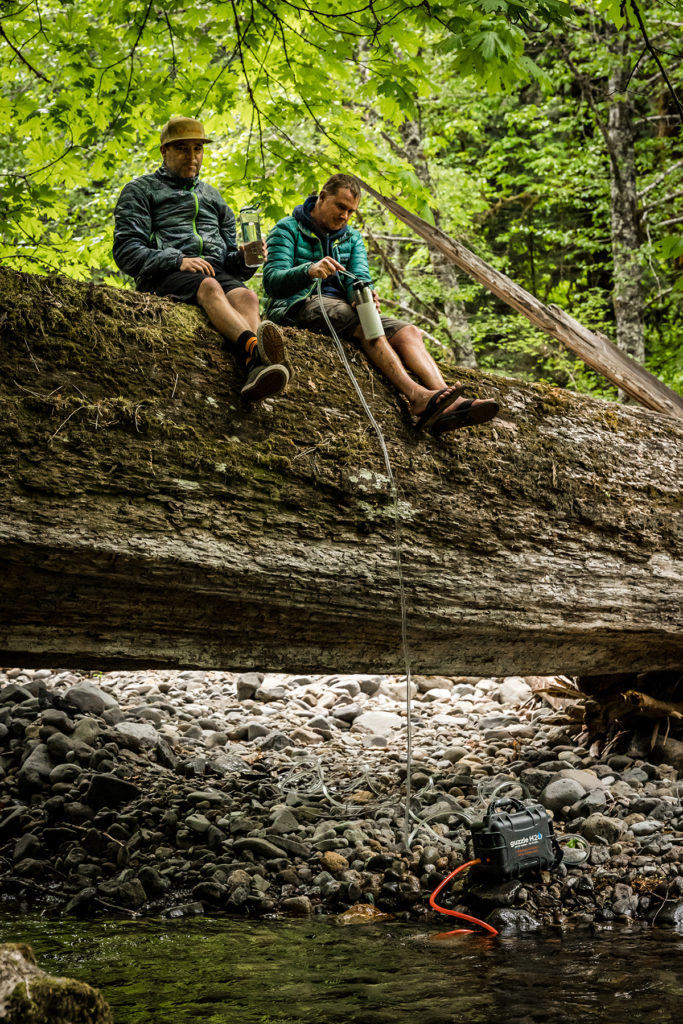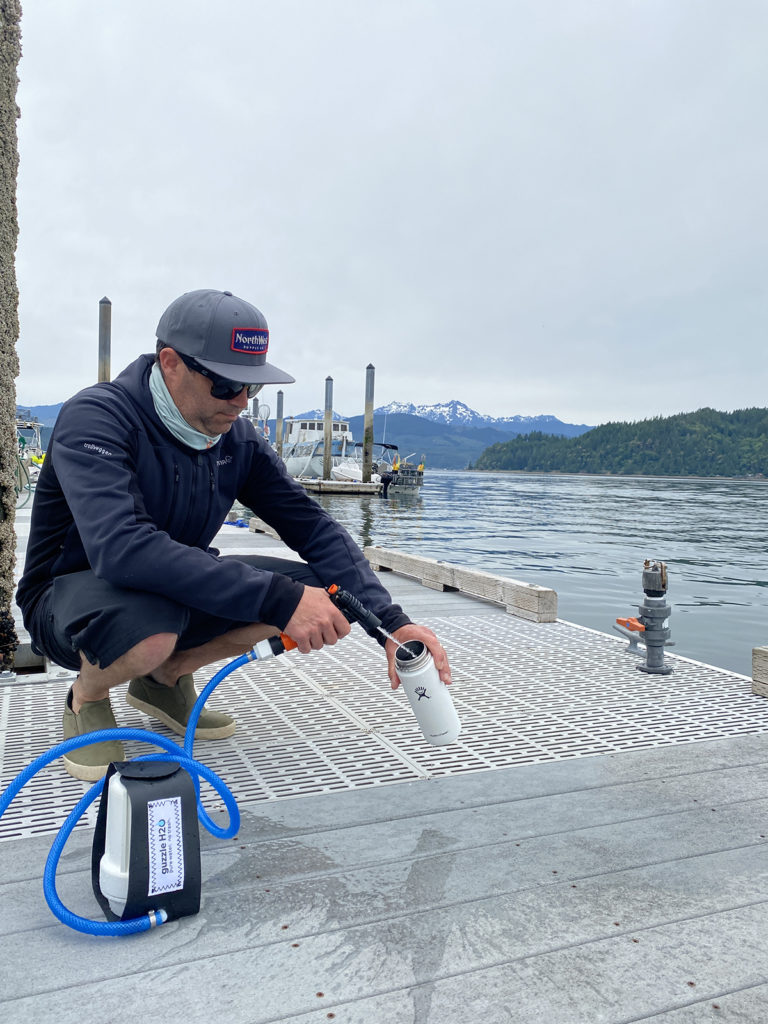
Some business ideas emerge as a doodle on a dinner napkin, others brought to life when pitched to venture capitalists in a boardroom, and still others are born after months of dabbling away in a garage. But for Guzzle H2O (guzzleh2o.com)—a Hood River, Oregon-based company that designs easy-to-use water purification systems specifically for outdoor enthusiasts—their story began with a widely shared post penned on social media.
The post author was Sean “Doogie” Couvreux, a longtime sailor and professional bowman for several racing teams, who was fed up with what he saw as the overuse of one-time plastic water bottles during sailing events, often spotting trash and recycling bins piled high both onshore and onboard. He took his concerns to Facebook in late fall 2017, arguing for the ban of plastic bottles on racing boats, which would effectively force the sport to adapt, change, and lessen its carbon impact. Backing up his argument, World Sailing had at the time recently instituted a policy to suspend the use of yarn and wool on race boats for similar reasons. (Crews would use yarn to keep their spinnakers under control while sails were being hoisted; the yarn would break as the sail started to fill, but then usually just fell into the water as waste.)
“The sport quickly found new solutions and now those are way better than when we used to use yarn,” Couvreux explains. “It just took a push with the rules for the sport to innovate and come up with a better idea. My argument with water bottles was the same. Make a rule and the sport will come up with a solution.”
Heart icons were double-tapped and share buttons were clicked, his post soon circulating amongst his connections around the world. One of those connections was Tyler Bech, longtime family friend, fellow biking aficionado, and a frequent collaborator with Couvreux on sailing parts development projects. After spotting his pal’s post, he posed a big question in response: What if they developed a way to make it simpler for people to get clean water so no one would bother to buy cases of water ever again?
So, they set out to do just that, building their first prototype in 2018 and testing out their initial purifying systems on the boats racing the Transpac 52 Super Series circuit in Europe. It was a resounding success. “The teams quickly saw the light in being able to use water available at the dock to fill all the water tanks and bottles for a day’s worth of racing” they explain. “Our system is easily carried by one person, and it is fully self-sustainable with its own power source. They didn’t need to bring power cords. A single charge was enough to provide filtered water for several days of use. So the simplicity of our system was very attractive in a fleet that is very logistical intensive.”
The product line grew from there, and today, the brand offers two portable options enjoyed by campers, fishing fans, and outdoor enthusiasts, in addition to options built-in at point of use.
First is the compact “Spigot” system that connects to the standard hoses found at campgrounds, parks, and marinas and filters water through premium carbon blocking to remove a wide range of chemicals, chlorine, lead, mercury, bacteria, cysts, and microplastics. The powerful, but still totable, “Stream” design can attach to those same hoses, or, pull water from any creek, stream, or lake thanks to the onboard pump, filtering water at an astounding rate of 1.1 gallons per minute. An LED-based UV system working in combination with powerful LiFePO4 lithium batteries allows this high volume treatment system to still fit in a compact case.

And then there is the “Stealth” series. These built-in systems are ideal for any vehicle with an on-board, pressurized water tank and can be installed in camper trailers, RVs, and, of course, what inspired it all—boats. The collection is available in three levels of filtration depending on your water needs aboard: carbon block, UV, and both UV and carbon block combined.
The carbon block alone will make water quality improvements that you can both see and taste, removing sediments much like a screen door filters bugs, absorbing chemicals, and improving flavor. The UV method acts as an additional sanitizing step in the process, sterilizing water with UV-C spectrum light and inactivating 99.99% of all microbiological hazards including viruses. Together, they pack a one-two punch to produce super clean and fresh-tasting H20.
Also of note for the seafaring set, Guzzle H20 seems to have solved a long-running grievance amongst boaters: The chore of schlepping, carting, and carrying heavy, bulky cases of plastic bottles down the docks every time you’re due for a stock-up. After install, this cumbersome job can be replaced by a simple turning of the tap. They acknowledge the systems are a long-term investment, ranging from $215 to $750 prior to install, but that “once people see our systems in use, the light bulb switches on, and they can see the logic behind it and quickly become customers.”
For Bech and Couvreux, those climbing customer numbers mean fewer plastic pollutants, each system allowing them to chart a course to a more sustainable future—for racing, for the planet, and for Guzzle H20. “The future is very bright…We believe that if we make our systems easy to use and install, customers really will be more willing to use the water that is readily available instead of purchasing it.” We’ll certainly drink to that.
>> For more information, or to purchase a purification system, visit: guzzleh2o.com.